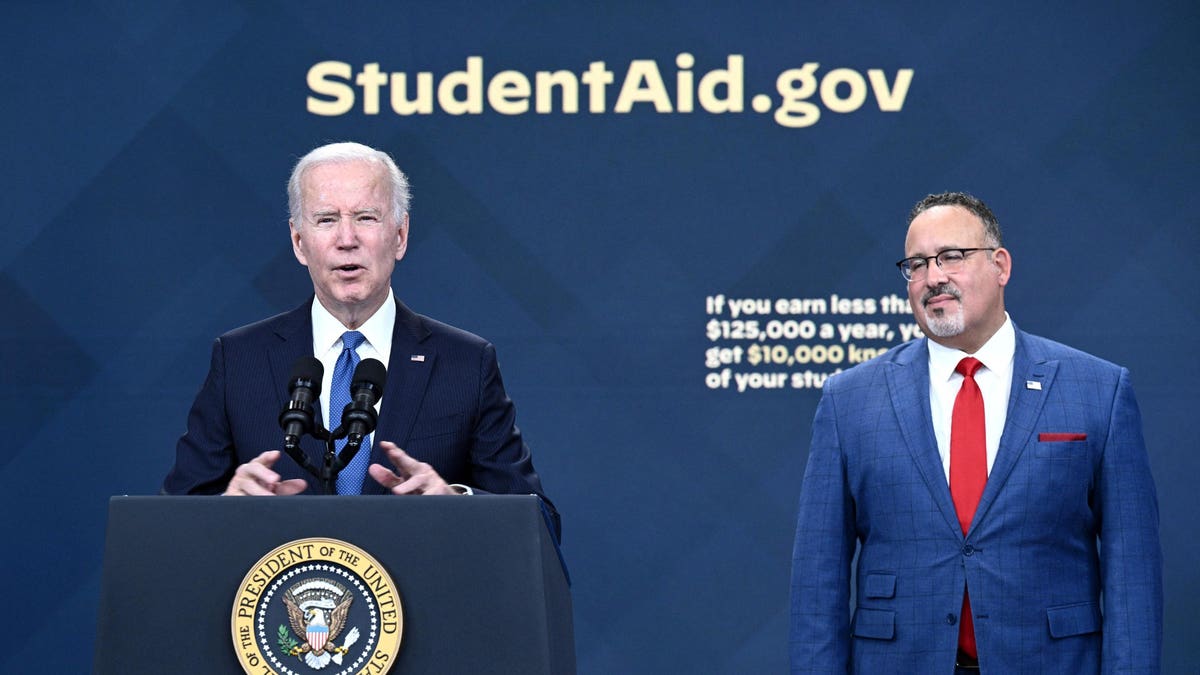Florida School Shootings: Lockdown Protocols And Generational Impact

Table of Contents
Analyzing Florida's School Lockdown Protocols: Effectiveness and Shortcomings
Current Lockdown Procedures in Florida Schools
Florida schools adhere to a range of lockdown procedures, often incorporating elements mandated at the state level and best practices recommended by organizations like the Department of Education and the Florida Association of School Superintendents. These protocols aim to ensure student and staff safety during active shooter events.
- Active Shooter Drills: Regular drills simulating active shooter scenarios are conducted to familiarize students and staff with procedures. The frequency varies across districts, with some conducting drills monthly, others quarterly.
- Communication Systems: Schools utilize various communication systems, including public address systems, two-way radios, and emergency alert systems, to disseminate information during lockdowns.
- Staff Training: Teachers and staff undergo training on lockdown procedures, including how to secure classrooms, communicate with emergency responders, and provide first aid. However, the extent and quality of this training can vary significantly.
- Designated Safe Rooms: Many schools designate specific rooms as safe spaces during lockdowns, often reinforced or equipped with specialized security features.
Weaknesses and Gaps in Existing Protocols
Despite the existing protocols, several weaknesses and gaps hinder their effectiveness in protecting students and staff during Florida school shootings. Critical reviews and post-incident analyses frequently highlight recurring issues.
- Lack of Standardized Training: Inconsistencies in training across districts can lead to confusion and potentially fatal delays during emergencies. More standardized, comprehensive training programs are needed.
- Communication Breakdowns: Communication failures during lockdowns have been documented, leading to delays in emergency response and increased risk to individuals. Improved communication systems and training are critical.
- Inadequate Security Measures: Some schools lack sufficient security measures, such as robust entry systems, security cameras, and sufficient security personnel, making them more vulnerable to intruders.
- Mental Health Support Gaps: Insufficient access to mental health services before, during, and after a school shooting significantly impacts recovery and resilience.
Technological Advancements in School Security
Technological advancements offer promising tools to enhance lockdown effectiveness and improve school security in Florida. However, implementation and funding often pose challenges.
- Security Cameras and Surveillance Systems: High-quality security cameras, strategically placed throughout the school, can provide real-time monitoring and valuable evidence for investigations. Integration with AI-powered threat detection systems is emerging.
- Emergency Alert Systems: Advanced alert systems, including mobile apps that provide immediate notifications to students, staff, and parents, can facilitate rapid communication during emergencies.
- Panic Buttons and Silent Alarms: Easily accessible panic buttons and silent alarms allow staff to alert emergency services discreetly and quickly, potentially saving valuable time during an active shooter situation.
- Access Control Systems: Smart card access systems and other sophisticated entry systems can restrict access to school buildings, reducing the risk of unauthorized entry.
The Psychological and Emotional Toll: Generational Trauma from School Shootings
Immediate Impact on Students and Staff
The immediate aftermath of a Florida school shooting inflicts acute trauma on students, staff, and first responders. The psychological impact can be profound and long-lasting.
- Post-Traumatic Stress Disorder (PTSD): Many survivors develop PTSD, characterized by flashbacks, nightmares, anxiety, and avoidance behaviors.
- Acute Stress Reaction: Immediate reactions include shock, disbelief, fear, anger, and intense emotional distress.
- Grief and Loss: The loss of loved ones or the witnessing of violence can lead to profound grief and a sense of loss.
- Immediate Support Systems: Schools often provide immediate counseling and support services, working with crisis response teams and mental health professionals.
Long-Term Effects on Mental Health
The long-term consequences of school shootings extend far beyond the immediate aftermath, impacting the mental health and well-being of individuals and communities for years to come.
- Increased Rates of Mental Illness: Survivors often experience higher rates of anxiety disorders, depression, substance abuse, and other mental health problems.
- Relationship Difficulties: Trauma can significantly impact relationships with family, friends, and peers, leading to isolation and difficulties forming healthy attachments.
- Academic Challenges: Students may struggle with concentration, memory, and academic performance following a traumatic event.
- Long-Term Support Strategies: Ongoing mental health support, trauma-informed therapy, and community-based interventions are crucial for long-term healing and recovery.
Intergenerational Trauma and its Impact
The trauma of school shootings isn't confined to those directly involved; it can be transmitted across generations, impacting families and communities for years to come.
- Parental Anxiety and Hypervigilance: Parents of children attending schools in areas affected by shootings may experience increased anxiety and hypervigilance, impacting their own well-being and their ability to support their children.
- Transmission of Fear and Anxiety: Children may inherit anxieties and fears related to school safety from their parents or other family members, even if they haven't experienced a shooting firsthand.
- Breaking the Cycle of Trauma: Early intervention, trauma-informed care, and strong community support systems can help mitigate intergenerational trauma and promote resilience.
Moving Forward: Prevention Strategies and Policy Recommendations
Strengthening School Security Measures
Improving school security requires a multi-pronged approach focusing on both physical and mental health aspects.
- Enhanced Background Checks: More rigorous background checks for all school personnel can help identify potential threats early on.
- Increased Security Personnel: Employing more security personnel, including trained professionals, can enhance campus safety and provide a visible deterrent.
- Improved Mental Health Services: Providing readily accessible mental health services for both students and staff can address underlying issues that may contribute to violence.
- Advanced Security Technology: Investing in and implementing advanced security technologies, such as those mentioned above, can improve detection and response capabilities.
Addressing the Root Causes of Violence
Addressing the root causes of school shootings requires a comprehensive approach that tackles various societal issues.
- Gun Control Legislation: Implementing stricter gun control measures can reduce the availability of firearms and potentially prevent tragedies.
- Addressing Social Inequalities: Tackling social inequities such as poverty, racism, and discrimination can create safer and more inclusive communities.
- Early Intervention Programs: Implementing early intervention programs for at-risk youth can identify and address potential threats before they escalate.
- Comprehensive Mental Health Reform: Investing in comprehensive mental health reform can provide accessible and quality mental health care for everyone.
Promoting Resilience and Trauma-Informed Practices
Creating a resilient and trauma-informed school environment is crucial for supporting students and staff affected by school shootings.
- Safe and Supportive School Climate: Fostering a school environment where students and staff feel safe, respected, and supported is essential.
- Access to Mental Health Resources: Providing readily accessible mental health resources, including counseling and therapy, is critical for promoting well-being.
- Community Building Initiatives: Creating opportunities for students, staff, and families to connect with each other and build a sense of community can foster resilience.
- Trauma-Informed Training for Educators: Educators need training on trauma-informed practices to effectively support students who have experienced trauma.
Conclusion
The effectiveness of current Florida school lockdown protocols is hampered by inconsistencies in training, communication breakdowns, and inadequate security measures. Furthermore, the generational impact of school shootings is profound, causing lasting psychological trauma, impacting mental health, and even affecting subsequent generations. Moving forward, comprehensive and multi-faceted approaches are crucial. This includes strengthening school security measures, addressing the root causes of violence, and promoting resilience and trauma-informed practices. Let's work together to create safer schools and prevent future Florida school shootings by improving lockdown protocols and addressing the underlying causes of violence impacting generations. Support organizations dedicated to school safety and advocate for policy changes to protect our children and communities.

Featured Posts
-
 Hollywood Shut Down Actors And Writers On Strike What This Means For The Industry
May 17, 2025
Hollywood Shut Down Actors And Writers On Strike What This Means For The Industry
May 17, 2025 -
 Did Allegations Of Affairs And Sexual Misconduct Affect Donald Trumps Election Chances An Analysis
May 17, 2025
Did Allegations Of Affairs And Sexual Misconduct Affect Donald Trumps Election Chances An Analysis
May 17, 2025 -
 Addressing Late Student Loan Payments To Protect Your Credit
May 17, 2025
Addressing Late Student Loan Payments To Protect Your Credit
May 17, 2025 -
 Evaluating Uber Technologies Uber As An Investment
May 17, 2025
Evaluating Uber Technologies Uber As An Investment
May 17, 2025 -
 Pga Championship Upset In Round One As Unlikely Leader Emerges
May 17, 2025
Pga Championship Upset In Round One As Unlikely Leader Emerges
May 17, 2025
Latest Posts
-
 Trump Family Connections A Visual And Informative Guide
May 17, 2025
Trump Family Connections A Visual And Informative Guide
May 17, 2025 -
 A Guide To The Trump Family Genealogy And Notable Figures
May 17, 2025
A Guide To The Trump Family Genealogy And Notable Figures
May 17, 2025 -
 Tracing The Trump Family From Ancestors To Present Day
May 17, 2025
Tracing The Trump Family From Ancestors To Present Day
May 17, 2025 -
 Exploring The Generations A Look At The Trump Family History
May 17, 2025
Exploring The Generations A Look At The Trump Family History
May 17, 2025 -
 New York Knicks Depth Shines In Brunsons Absence
May 17, 2025
New York Knicks Depth Shines In Brunsons Absence
May 17, 2025
